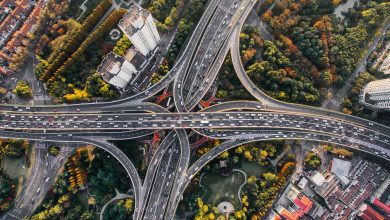19 Interesting Facts About The Singapore F1 Grand Prix
September is an exciting month for Singaporeans and motorheads around the world. For the 8th year running, Singapore will be hosting the iconic Singapore F1 night race. Here are 19 interesting facts that you probably didn’t know about the race:
-
Although the 5.067km Marina Bay Street Circuit is not the only street race in the F1 season, it was the inaugural night race. This was planned to accommodate to the time zone difference between Western countries and Singapore.
-
Fitted along the track are 1,600 lighting projectors, each consisting of a projector with internal reflectors that project the light beams at different angles to prevent it from blinding the drivers. As a result, the track is 4 times more brightly lit than a stadium.
-
The Marina Bay Street Circuit has more corners than any other circuit on the calendar – 23 (14 left handers and 9 right handers). The fact that most of these are fairly tight helps contribute to Singapore having one of the longest average lap times on the calendar, comparable only to Spa-Francorchamps which is 1.939 km greater in length.
-
The relatively slow nature of the circuit – and the propensity for safety cars – means it takes longer than average to complete the 305 km minimum race distance. As a result, Singapore is almost always the longest race of the season. None of the previous races in Singapore has been completed in under 1 hour 56 minutes.
-
During its inaugural year, the Marina Bay Street Circuit was revamped with an asphalt surface that uses Polymer Modified Binder (PMB) to withstand forces exerted by the race cars during the F1 race. The high speed generated by the supercar are able to fling manhole covers free. To withstand high speeds, the manholes at the Marina Bay Street Circuit have to be welded shut before each race.
-
The smallest winning margin in Singapore F1 Grand Prix history came in 2010 when Alonso beat Vettel by just 0.239s. Coincidentally the biggest winning margin at the venue involved the same two drivers and came in 2013 when Vettel finished 32.627s ahead of Alonso.
-
Each F1 vehicle is mounted with over 100 sensors that report the acceleration, braking speed and a multitude of data to the driver’s team. It is no secret that SAP developed an app for the McLaren team to monitor temperature change in tyres and predict likely stress areas on vehicles during the race. Gathered data is crunched by SAP analytics, which reveals important facts such as the best areas to brake or accelerate for the best speeds. The app also comes with a 3D render that lets the team zoom into specific parts of the vehicle, allowing them to identify potential problems and arresting them before issues such as engine failures or a blown gasket kicks in.
-
In little over an hour, F1 drivers are exposed to sauna-like conditions in the cockpit, causing them to lose between two to three litres of water during each race. It is no wonder that drivers are required to drink up to 8 litres of water to keep themselves fully hydrated. An F1 driver loses up to 4kg of weight per race, though the weight is regained just as easily.
-
Singapore has the most number of female race officials worldwide. About 25% of race officials in Singapore are female, the highest number percentage across the Formula One Circuits.
-
With approximately 80,000 components built into an F1 vehicle, each vehicle has to be assembled with precise accuracy. Even a mere 0.01% error in the assembly could mean 80 wrong components, which leads to crashes. After the two-hour race, the engines are retired for good, whereas normal engine can keep going for 20 years.
-
Braking will make drivers cry. At such extreme speeds, an equally strong braking force is required to grind the car to a halt. Even with all the anticipation in the world, each driver will feel as if they are slammed into a brick wall at a speed of nearly 300km/h whenever they brake. The sheer impact is so strong that drivers’ tear ducts squirt water into their visors.
-
While Lewis Hamilton or Sebastian Vettel have lightning reflexes to swerve through the Marina Bay Street Circuit, their teams are just as quick. Like most backend personnel, the pit crew are every team’s unsung heroes. Each member works harmoniously with each other to achieve a three-second tyre change and refuel. The refuelling rig pumps 12 litres per second to the car, while drivers change their gears approximately 5,000 times on the Marina Bay Street Circuit during the race.
-
There are 61 laps in the Singapore Grand Prix. Each lap is approximately 5km long with 21 turns.
-
Each F1 car has a plank of wood bolted to its underside. This is to ensure that teams do not build their cars too low to the ground, which would unfairly increase speed. If the plank wears away too much, the car is automatically disqualified.
-
The total length of carbon fibre microthreads used in a F1 helmet spans almost 16,000km, which in comparison is the distance from Singapore to Brazil.
-
During a race, F1 drivers experience extreme forces of up to 4.5 – 5.5 times of their gravitational force, which basically means that they are supporting 5 times their body weight just on their necks.
-
One of the best places to watch the race in Singapore is at the Anderson Bridge, which overlooks Turn 13, the sharpest turn of the circuit.
-
1:45:599 minutes is the record for the fastest ever lap in the Singapore F1 Grand Prix, an honour that goes to Kimi Raikkonen.
-
Only three different drivers have won the Singapore F1 Grand Prix in its first eight runnings: Sebastian Vettel (2011-13, 2015), Lewis Hamilton (2009, 2014) and Fernando Alonso (2008, 2010).
We hope that you’re ready for the upcoming Singapore F1 GP. For those who will be driving on race days, note the road closures that will take place on the day itself.
Source: Singapore F1 GP, sg.asia-city.com, stuff.tv




